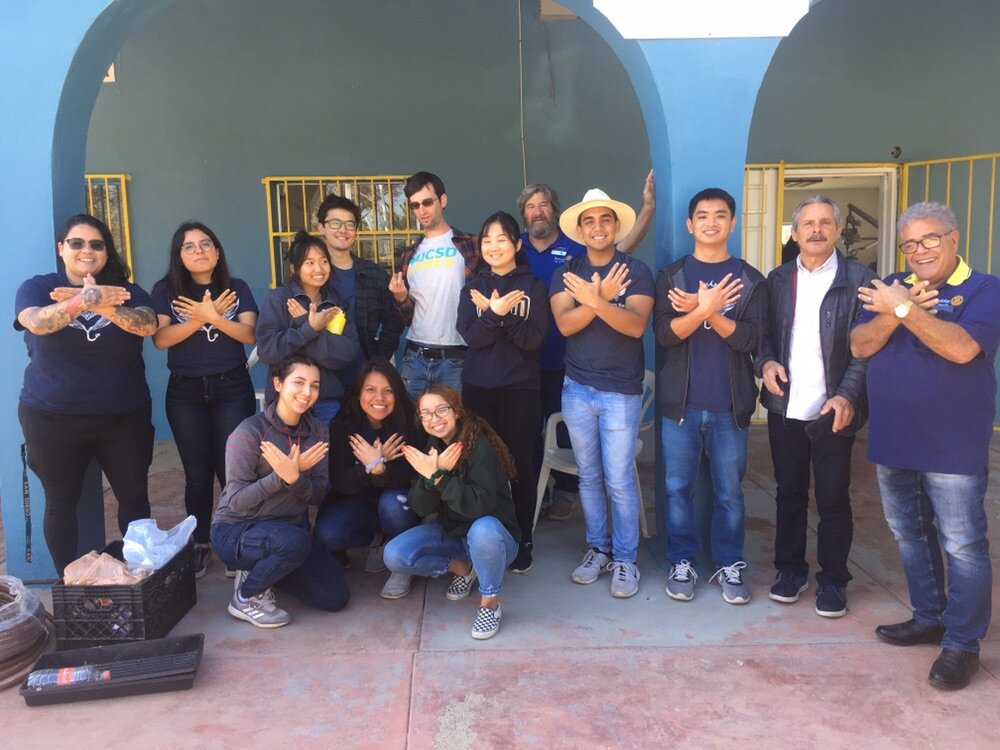About Us
UCSD Flying Samaritans
We were established in 2001 by a group of UCSD students and advisors. Our team is currently conformed of undergraduate students, medical and dental providers, and San Diego community members that dedicate their time for the benefit of the Baja California communities. Our goals are to complement the existing healthcare structures, provide patients with a sense of agency, and inspire generations of future healthcare providers to prioritize service and innovative solutions.
We have our primary clinic at the community of Chapultepec in Ensenada, Mexico. In this clinic we provide medical, and dental services. Twice a year, we also have a women's and optometry clinics in this community. Likewise, we visit a nursing home in San Vicente, an orphanage in Valle de Guadalupe, and another orphanage in Rosarito.
Mexican Healthcare Structure
Healthcare in Mexico is divided in two sectors: public which is provided by the government and private which is provided by private organizations and physicians. Public healthcare is organized by the Mexican government and is guaranteed to all Mexican citizens according to Article 4 of the Constitution of Mexico. The Public healthcare is formed by two groups, one group provides healthcare to workers, retirees and their families. This group is formed by three organizations: 1)Instituto Mexicano del Seguro Social (IMSS) (ENGLISH: Mexican Social Security Institute) which covers employees from private companies and covers 80% of group is treated, 2) Instituto de Seguridad y Servicios Sociales de los Trabajadores del Estado (ISSSTE) (ENGLISH: Institute for Social Security and Services for State Workers) covers government employees and treats 18% of this group, 3) Secretaria de Defensa Nacional (SEDENA) (ENGLISH: Secretariat of Nacional Defense) covering the rest (2%) of the employees from Mexican Navy to Mexican Petroleum (PEMEX) workers. The other public group is covered by the Seguro Popular (ENGLISH: Secretariat of Health) which embarks the unemployed, workers of the informal sector, and people that are not part of the job market. Even though the entire public healthcare sector guarantees health coverage to the worker or unemployed and their families, one major problem is deficiency. The absence of medications in the public healthcare leads the individual to pursue the prescription medication in a private pharmacy. Also, the absence of public facilities in some areas of the country drive people to commute to the closest public facility and wait long periods of time before being attended by a physician.
The private sector is based mainly on clinics and hospital units which account for two thirds of the hospitals in Mexico. Healthcare delivered by private organizations is placed on the free market and available for those that could afford it. Less than 10% is covered by private insurance coverage, and this care is mainly paid “out of pocket”. Through time, the private sector has improved its ability to provide service to the public by improving on its infrastructure and financing. This is mainly due to the consumers part. Private physicians have a mixed practice where half of their time goes to working in private and the other half in the public sector. Usually they work long hours with high workload, having to compete for patients they rent offices in private hospitals. Private physicians prefer branded medications, but they prescribe generic option for those of lower income. This option is becoming more common as doctors are aware of the economic situation in Mexico.
Written by: Carlos Antonio Garcia Tovar, Mexico Liaison 2019-2020
